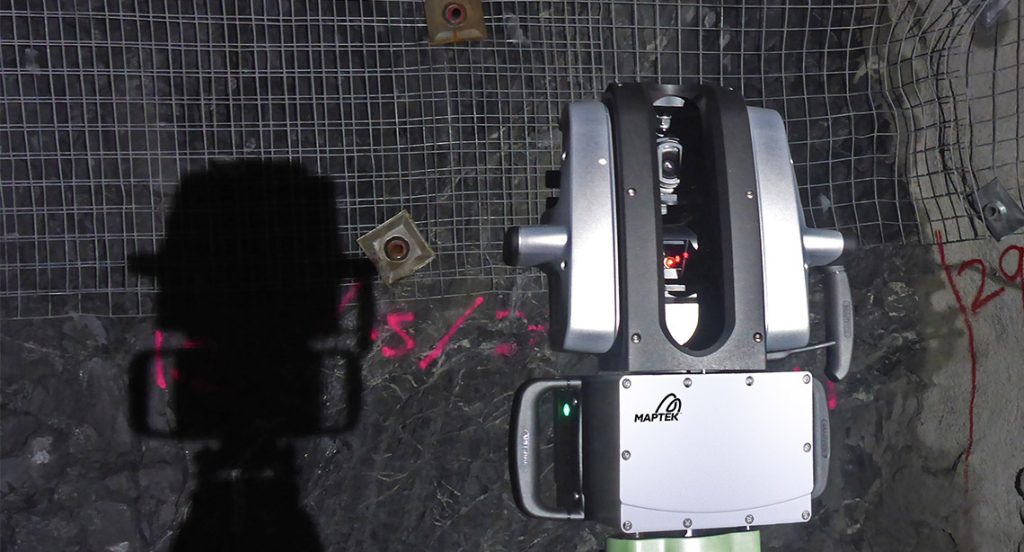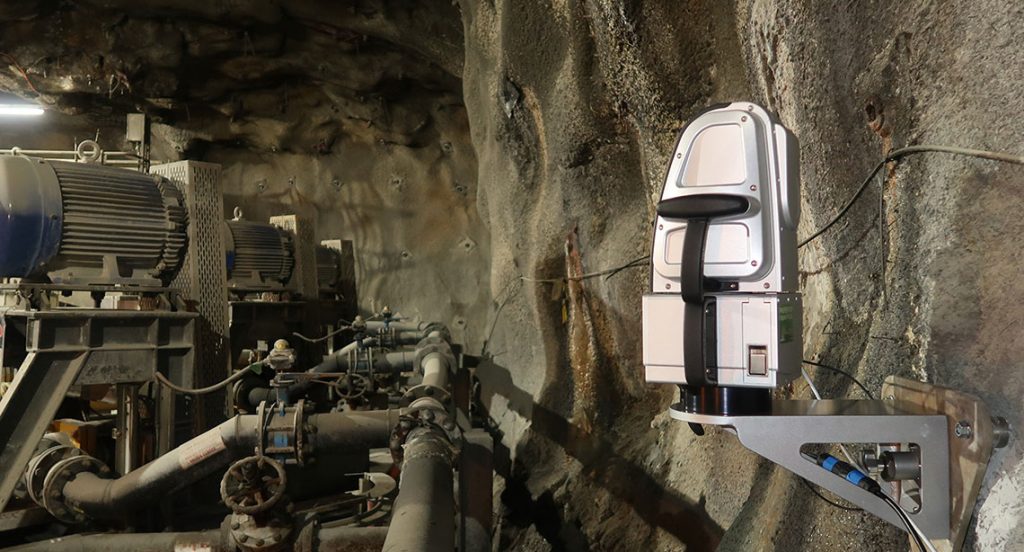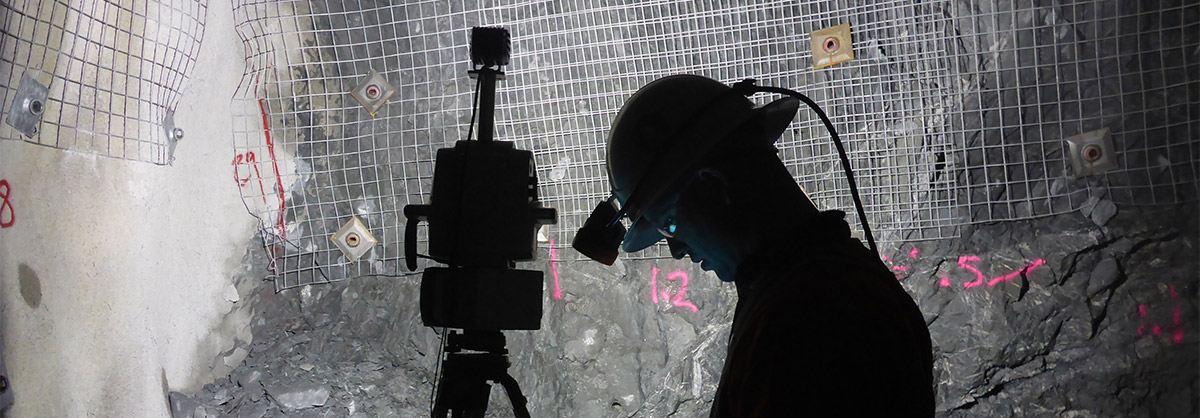December 2020 Issue Index
Underground scanning at Fosterville
Maptek mine measurement solutions are helping geology and geotechnical engineering teams save time and monitor safety at an underground gold mine.
Kirkland Lake Gold is a growing gold producer operating in Canada and Australia that produced 974,615 ounces in 2019.
Kirkland Lake Gold’s production profile is anchored by the Macassa Mine and Detour Lake Mine in Northern Ontario, Canada and the Fosterville Mine in Victoria, Australia.
Located about 20km from Bendigo, Fosterville began operating in 2005. The underground mine has benefited from Maptek technology, including SR3 laser scanners and PointStudio software.
The geology team uses two laser scanners for structural mapping and identifying structures.

‘They primarily focus on scanning the ore drive development headings and then analyse the data and do the mapping in PointStudio,’ said Fosterville Project Rock Mechanics Engineer, Corey McKenzie.
The Maptek SR3 is a dedicated underground laser scanner, with a scan window of 130° vertically and 360° horizontally for capturing roofs and walls in tunnels and underground drives.
With fast accurate sensing and tailored mount accessories, the SR3 can be operated remotely from any web enabled device and combines well with modelling software PointStudio for improving overall productivity and safety underground.
‘PointStudio has a lot of neat tools. Smart Query is useful for extracting joint set data, and the Distance for Objects feature can be used for fibrecrete thickness analysis,’ McKenzie said.
The geotechnical team uses ZEB scanners for convergence checks and is excited about the potential of Maptek workflows to streamline and save time in convergence monitoring.
The Workflow Editor incorporates software menu items, command line executables and scripting capabilities with Maptek Workbench tools and custom components to automate processes.
McKenzie commented that cloud to cloud comparison using laser scan data in PointStudio is all about safety.
‘We want to know if the walls or backs are moving. If we notice a spot that’s starting to deform we scan it more regularly so we’ve got that constant update of data and can track how it’s moving and the rate of deformation. We can then make decisions about rehabilitation. And we also need to know when our ground support capacity is going to be consumed,’ he explained.

When PointStudio was introduced at the site this year, McKenzie found it relatively easy to learn, appreciating the visual layout of the options along the top ribbon.
The geotechnical team is looking to expand its usage of PointStudio, and expects that the new scanline mapping tool in the latest version will be helpful for rockmass classification purposes.
‘We’re just starting to explore the geotech/rock mechanics aspects,’ McKenzie said. ‘Maptek is always willing to answer questions.’
The site recently completed a trial of Maptek monitoring solution Sentry.
‘Now that we’ve tested Sentry and know its capabilities, we’ll be confident down the track if there’s an area that we want to monitor more closely,’ concluded McKenzie.
Thanks to
Corey McKenzie
Project Rock Mechanics Engineer
Fosterville Gold Mine
- Maptek SR3 laser scanners are used to survey ore drive development headings at Fosterville underground gold mine
- PointStudio software tools are helpful for extracting joint set data and conducting fibrecrete thickness analysis
- Comparing point clouds in PointStudio is an important safety measure for monitoring deformation and convergence

